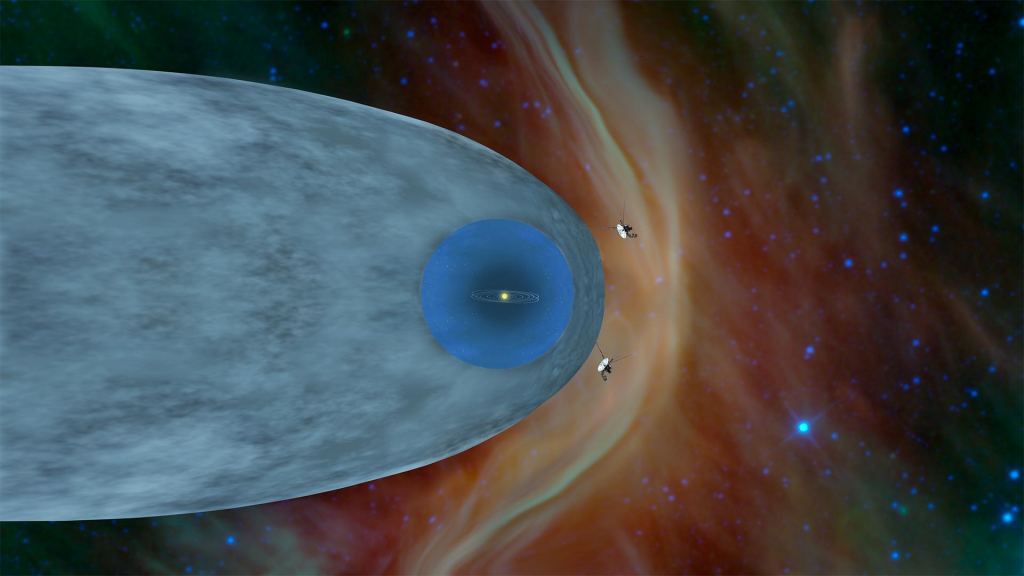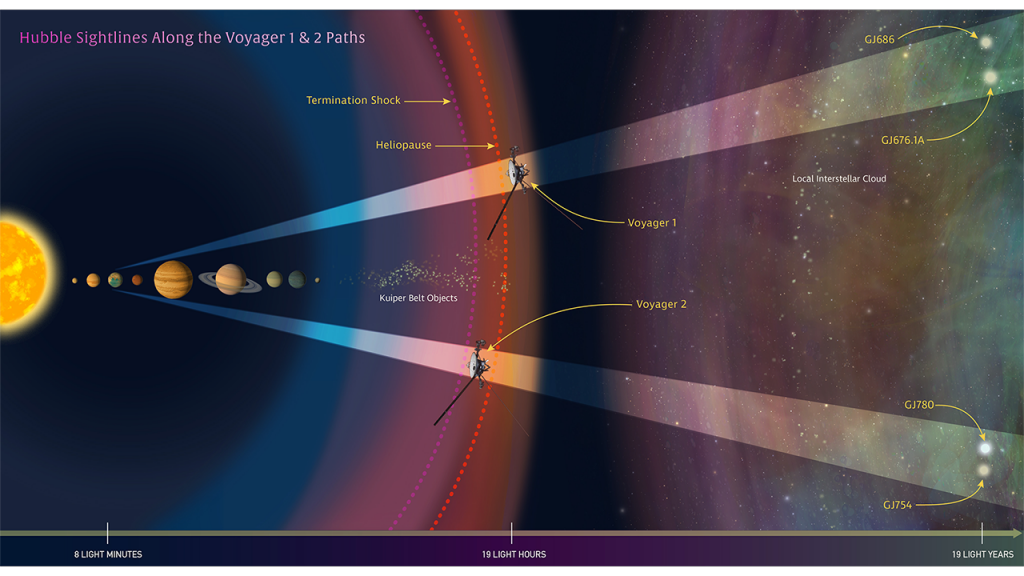NASA's Voyager 2 spacecraft went into fault protection mode on Tuesday January 28th. The fault protection routines automatically protect the spacecraft in harmful conditions. Both Voyagers have these routines programmed into their systems.
After it happened, NASA engineers were still in communication with the spacecraft and receiving telemetry.
The fault protection stems from a maneuver attempted on January 25th. On that day, Voyager 2 was supposed to execute a scheduled rotation maneuver. The spacecraft rotates itself 360 degrees to calibrate one of its instruments, MAG, the triaxial fluxgate magnetometer. That instrument is investigating the solar wind boundary with the interstellar magnetic field and beyond.
NASA says there was a delay in the maneuver, which caused two systems that draw a lot of power to be on at the same time. There's a tight power budget on Voyager 2, because its r adioisotope thermoelectric generators are running down. To protect itself, the spacecraft went into its fault-protection mode. In that mode, it shut down scientific instruments to make up for the power deficit. By January 28th, engineers had successfully shut down one of the two high-power-drawing systems, and turned its science instruments back on.
After that, they still weren't receiving data from the spacecraft.
Voyager 2 is still running, but its power situation is precarious. Mission engineers are constantly evaluating the status of the power system, and they know that it's losing about 4% of its power each year. A lot of power is needed to keep systems on the spacecraft from freezing, including fuel lines. If those lines froze, and broke, then Voyager 2 would no longer be able to point its antenna towards Earth, and the mission would effectively be over.
Voyager 2 is about 18.5 billion kilometers (11.5 billion miles) away, so communicating takes a long time. It's a 34 hour round trip for mission engineers to send a signal to the spacecraft and for the spacecraft to respond. So it's taken several days to work through this scenario.
On January 29th, NASA sent out this Tweet:
So it looks like Voyager 2 is back on track, though we're still waiting for things to get back to normal.
Voyager 2 is currently in interstellar space, having left the heliosphere in November 2018. In November 2019, three papers were published outlining what Voyager 2 found as it left the heliosphere. The spacecraft's power is running down, and some of its instruments have been turned off. But it should have enough power to keep transmitting data.
NASA has said in the past that Voyager 2 has enough power to keep working until roughly 2020, so at some point in the near future, we may hear the spacecraft's final transmission. Then it'll head off into space, lost to humanity forever.
More:
- Press Release: Voyager 2 Engineers Working to Restore Normal Operations
- NASA: Voyager
- Universe Today: What Voyager 2 Learned After Spending a Year in Interstellar Space
 Universe Today
Universe Today


